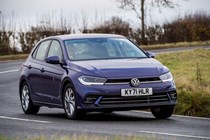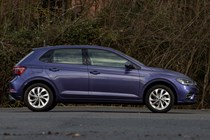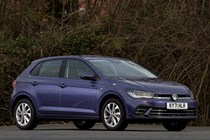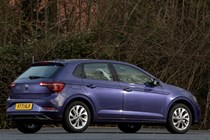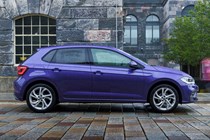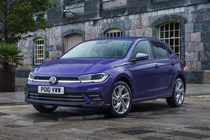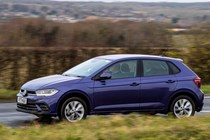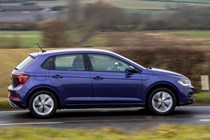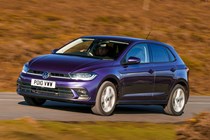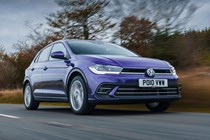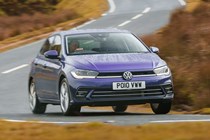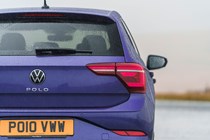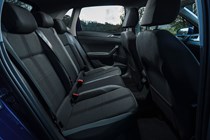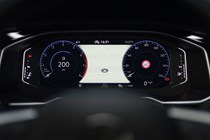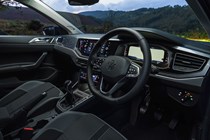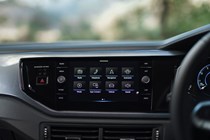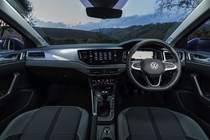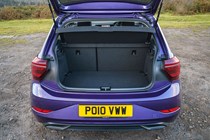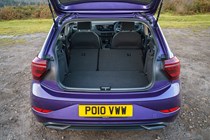
Volkswagen Polo engines, drive and performance
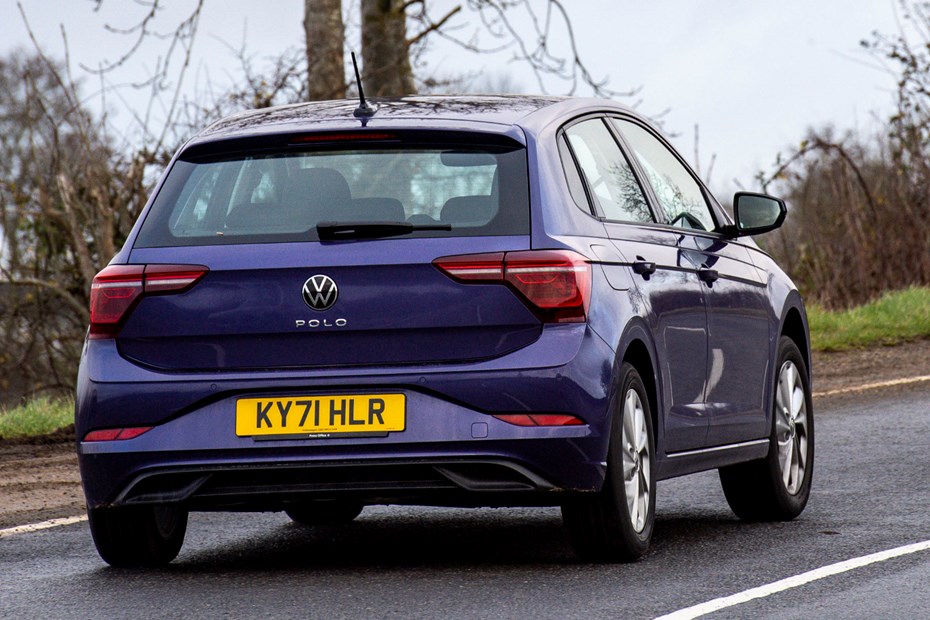
- Simple petrol-only engine range
- 1.0-litre units champion efficiency
- Safe and solid to drive
Petrol engines
The Volkswagen Polo comes with a 1.0-litre, three-cylinder petrol engine that’s available with a choice of three power outputs. The cheapest option is a naturally aspirated unit that produces a rather lethargic 80hp. With just 93Nm of torque, it’s short on muscle and can leave you exposed if you don’t have enough space to wind it up. Short motorway slip roads test your patience and foresight, and you need to plan weeks in advance before overtaking on single track roads. Really, it’s happiest at relatively low speeds in town, even if the manual gearbox could become tiresome in stop-start traffic.
Next, is a turbocharged version of the 1.0-litre engine – badged TSI – with 95hp and a meatier 175Nm of torque. It feels a lot happier at higher speeds. Power delivery and response is good once you’ve got the turbo working when the engine is spinning at 2,000rpm-ish, but it’s a bit sluggish below that level. That isn’t helped by the manual gearbox’s tall gearing. It’s good for fuel economy, but the engine often feels happier in, say, third gear rather than fifth, to the detriment of mpg.
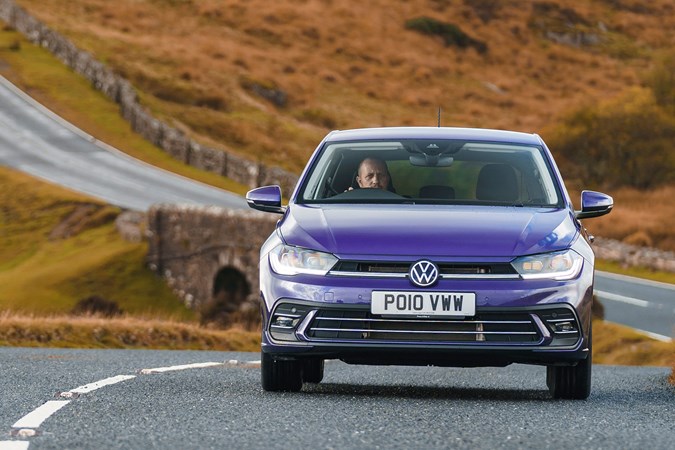
The problem is solvable, though, if you spec the optional seven-speed DSG automatic gearbox. Its two extra gears and automatic changes make better use of the engine’s power while giving the driver an easier time of it.
At the top range is a 115hp version of the 1.0 TSI engine. It’s a whole second quicker accelerating from 0-62mph than the 95hp version, and its substantial 200Nm of torque makes it an even more relaxed motorway cruiser. Especially with the standard-fit DSG gearbox.
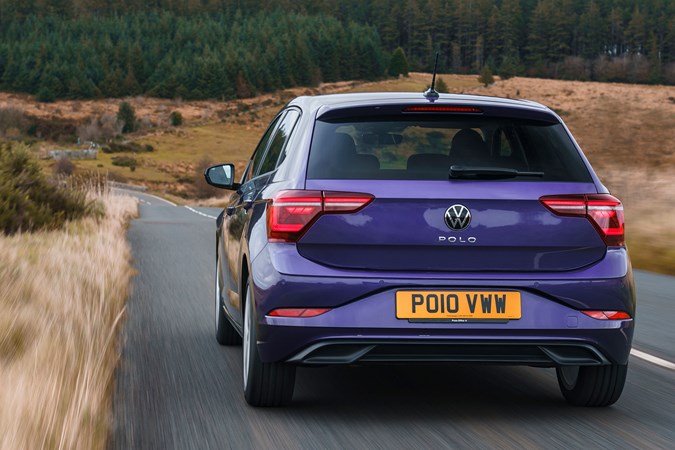
Notably, Volkswagen hasn’t opted not to offer the Polo with the 150hp, 1.5-litre engine found in VW Group’s other superminis – the Audi A1, SEAT Ibiza and Skoda Fabia. Which seems like an oversight to us, but perhaps Volkswagen thought a 1.5 Polo would tread too hard on the bigger Golf’s toes.
What’s it like to drive?
- Light controls make it easy
- Big car comfort and refinment
- Handling never really sparkles
The Volkswagen Polo is rather unremarkable to drive. It isn’t offensive, just forgettable. Our testers found very little feel in the steering and clutch, the engine’s power is governed more by the demands of fuel efficiency than your right foot, and the gear lever feels disappointingly rubbery.
Our biggest source of irritation was the brake pedal. It only has about an inch of travel, and most of the braking performance is delivered within the first few millimetres. It feels very bitey and that makes it quite difficult to brake smoothly. We’re sure you’d grow accustomed to it over time, but we can’t help but feel the Polo’s controls would feel more homogenous if the brake pedal felt as doughy as the clutch and throttle.
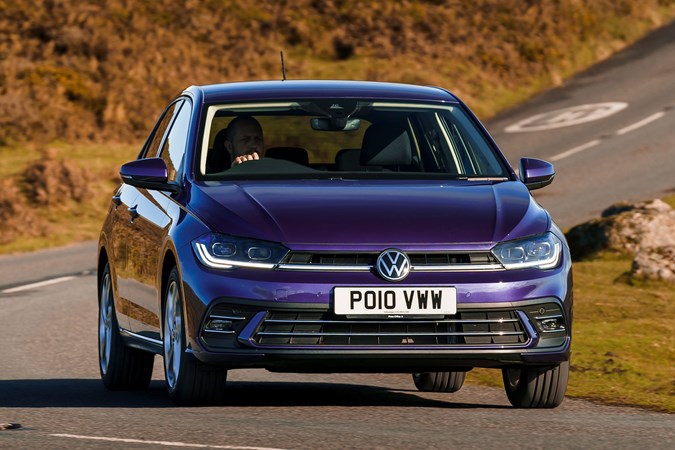
It’s certainly nowhere near as much fun to drive as the Ford Fiesta or Renault Clio; even the Dacia Sandero is more engaging even though it’s a objectively worse. But it’d be wrong to dismiss the Polo out of hand for its relatively humdrum driving experience because it actually provides the experience that a lot of drivers are looking for.
The Polo is ideal if you value comfort, refinement and security over lively suspension and talkative steering. The composed, safe experience it offers makes it a very relaxing companion on any journey.
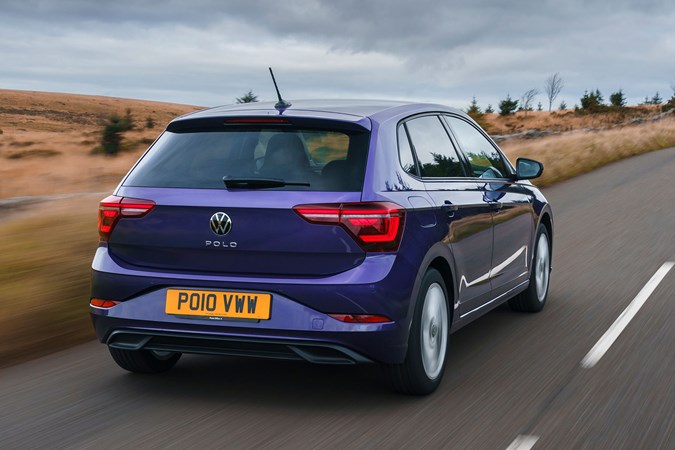
We’re especially impressed by its ride quality. Small cars tend to transmit more impacts and noises into the cabin, but the Polo filters most of them out. It’s also quite refined on the motorway once you’ve got the engine up to speed in a high gear. Wind noise is well suppressed, and the engine quickly fades into the background.
Ted Welford came away impressed after his long-term test. He said: ‘The Polo felt as good bumbling around town as it did on the motorway. Comfort and refinement were strong points, the smaller 15-inch wheels on our Life cars wrapped in big sidewall tyres likely aiding thing further.’


